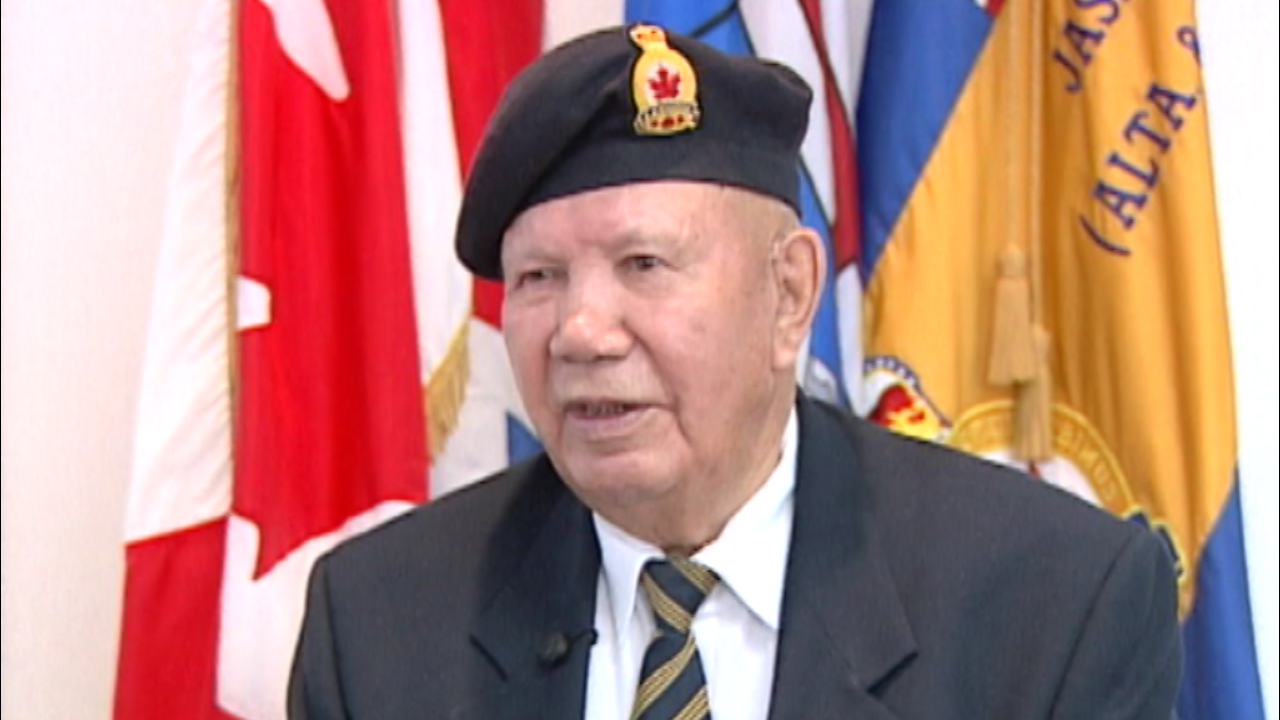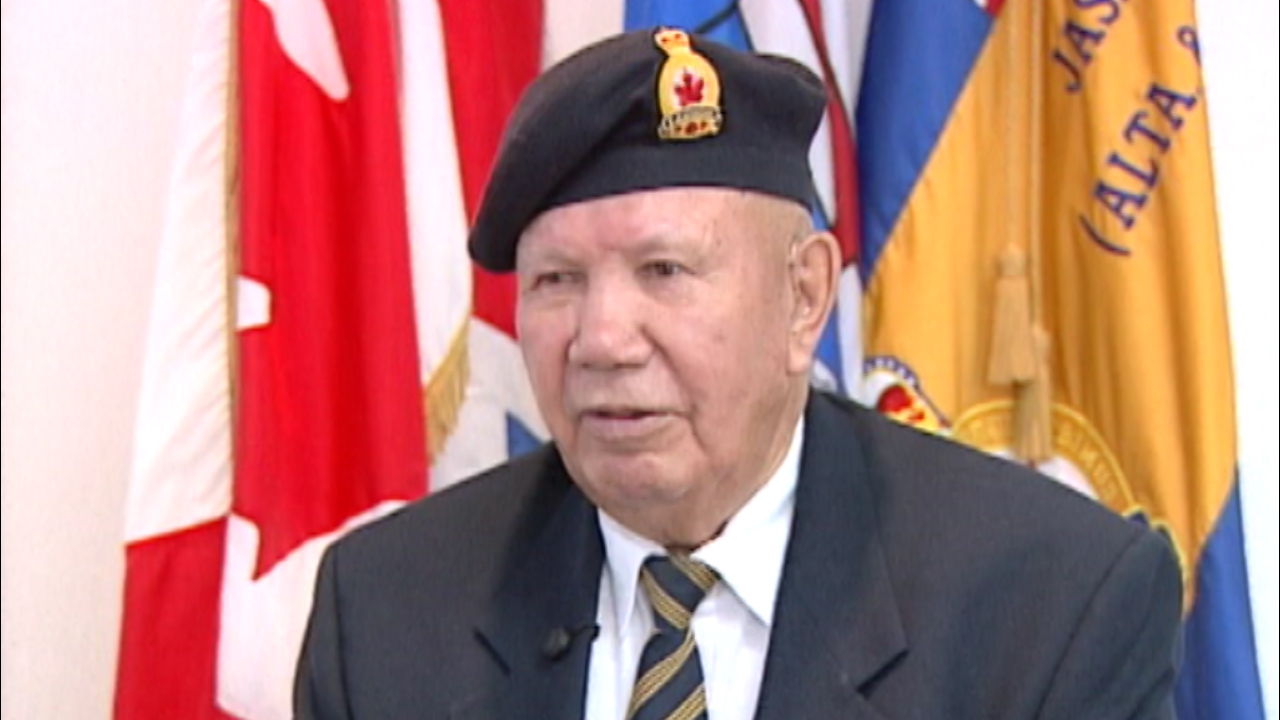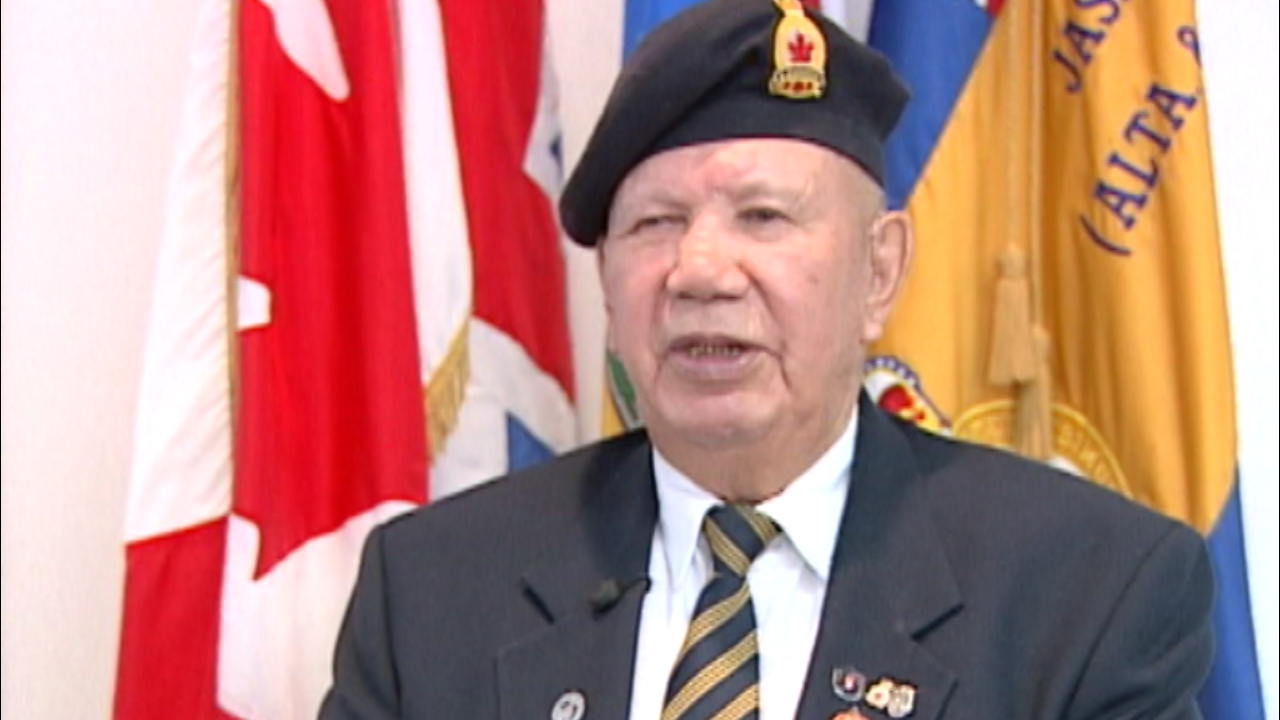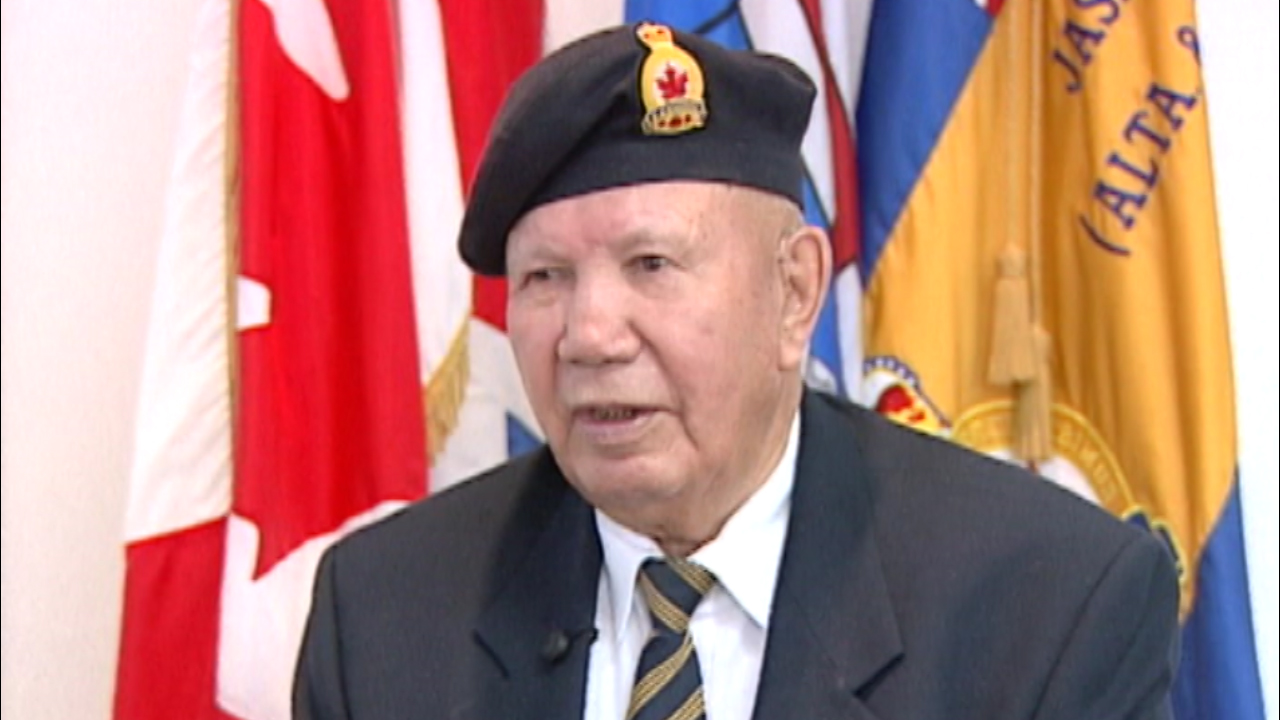Building and Repairing Bridges
Heroes Remember
Building and Repairing Bridges
Transcript
Our job was to when we put in the bridge. We had to mine it and
we had to stay there to look after it, in case there was a
counter attack. And we had our own slip trenches there, we had
the bridges all wired up and mined in case they counter attacked
and we had to blow them eh. Interviewer: On the other, or on the
flip side if the brigade was going forward, the Germans would
blow their bridges? Oh yes. Interviewer: And you men would be
expected to repair them? Yes we did. We had known as a Bailey
bridge that was a nice steel bridge it was, it would hold a tank
when built. The channel's weren't that wide and one of the
biggest bridges ever built was in the Campobasso there at the
Sanglo, but them Bailey bridges we had to build them at night
and so the daycos could go across ah. Interviewer: You men had to
become very experienced at doing this in darkness? Oh yes, but
it's funny ah, when there when we're in a line there ah, they
had these powerful search lights. They were all ways behind us
eh, and ah, you couldn't look into them to good, but out towards
the front you could see enough to know what your
doing. Interviewer: So these search lights would silhouette
you? Yes. Behind us. Interviewer: Wouldn't that make you a better
target for the Germans? Well they couldn't actually shoot against
a light, a search light. It's funny they had search lights. I
don't know who had thought of that, but it was nice you can go
on and you could see in places that you were going, but you
couldn't ah, and you know, could get off the roads when you were
coming back. Interviewer: Generally speaking though Mr Berard,
when you men went to build bridges the enemy was also there to
stop you? Oh yes. Yeah I remember, remember in Italy there after
we went to Ortona there, we went to Casino eh. They tramped us
over to the, and ah, we took a little training there with the,
the 5th American Rangers and ah, we went into Casino. The site
we scene there was terrible, ya know, we had to clear some mines
and some Americans was laying all over and ah, I remember that
night we went into Casino there, and ah , there was uh, they
laid a barrage there of 27 hundred guns, firing all day and all
night and they bombed it at night and in the morning then when
we went in. It was quite a thing ya know and ah, farther on, is
where Smoky Smith won his VC, he out took a tiger tank with a
PIAT gun. Interviewer: That was at the Savio
River? Yes. Interviewer: Before you get to that, you were involved
in the bridge at Liri Valley where Mr Triquet won his? Yes we
built two bridges there. Two Bailey bridges. Interviewer: What do
you remember about that operation? Well we, the party went in
there and he must of had a tough time because. I tell ya it was
pretty rugged country and then I remember that one bridge we
built there, just before, just after that they call it a road
that came from Ortona and the one from where we were, they
called it the Dundee Cross roads and ah, there was fox holes all
over and every time a guy went there, instead of standing on the
road you were in a fox hole talking somebody and ah, they had a
tough time eh. I'm telling you they lost a lot of men there.
Description
Mr. Berard outlines his duties as part of the Royal Canadian Engineers.
Robert John Berard
Robert John Berard was born in 1921 in Tofield, Alberta, son of a farmer, with five brothers and three sisters. In 1941, he enlisted in the Edmonton Fusiliers and was sent to Scotland in June 1942 as part of reinforcements for the Regina Rifles. He joined one of his brothers with the Royal Canadian Engineers in Sicily.
Meta Data
- Medium:
- Video
- Owner:
- Veterans Affairs Canada
- Duration:
- 04:59
- Person Interviewed:
- Robert John Berard
- War, Conflict or Mission:
- Second World War
- Branch:
- Army
- Units/Ship:
- Royal Canadian Engineer
Related Videos
- Date modified:






